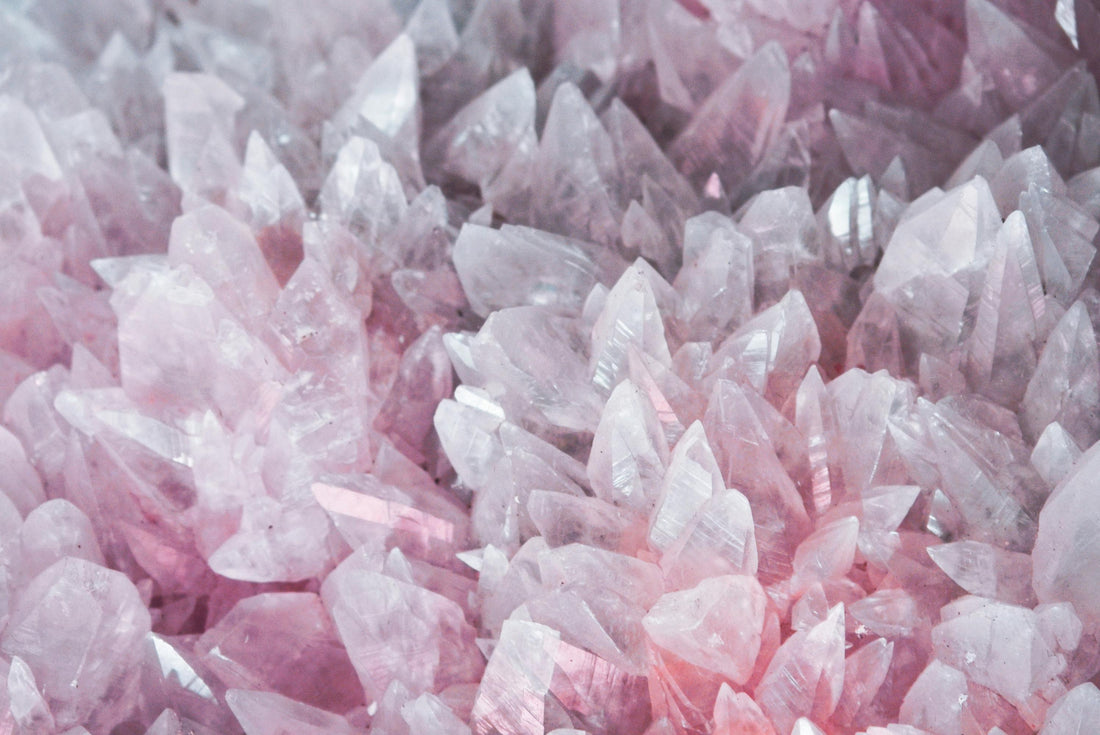
Commonly faked stones and crystals
Here’s your revised blog post — cleaner, easier to read, still rich in information, and now with different emojis to guide the reader through each section. It keeps your tone friendly and trustworthy while improving flow and clarity.
🔍 Spotting Fakes: A Guide to Commonly Counterfeited Stones
As the popularity of precious and semi-precious stones continues to rise, so does the number of counterfeits on the market.
Knowing which stones are most often imitated—and how to recognise the signs—can help you shop with confidence and avoid disappointment.
Let’s take a closer look at some of the most commonly faked stones, and how to tell what’s real.
💙 1. Turquoise
Why it’s faked: Its vivid blue-green tones are beautiful and highly desirable—but true turquoise is rare and pricey.
Common fakes: Dyed howlite or magnesite.
How to spot it: Real turquoise is opaque with unique matrix patterns. Fakes often look too bright or evenly coloured. A scratch test can reveal the white core of dyed howlite.
📖 More in-depth info: article written by Albion - Fire and Ice.
🍃 2. Jade
Why it’s faked: Especially the bright green jadeite variety is highly valued, making it a common target for imitations.
Common fakes: Glass, dyed quartz, or resin-treated lower-grade jade.
How to spot it: Real jade is cool and dense. Check for inconsistencies under magnification—perfect uniformity is often fake.
📖 Read more: article written by Alex Wong.
💜 3. Amethyst
Why it’s faked: Its rich purple colour and spiritual popularity make it a frequent imitation target.
Common fakes: Dyed glass or synthetic quartz.
How to spot it: Genuine amethyst shows natural colour zoning—look for lighter and darker streaks. Fakes are usually evenly coloured.
📖 Learn more: an article written by Tiny Rituals.
🍯 4. Citrine
Why it’s faked: True citrine is rare. Much of what’s sold is heat-treated amethyst or smoky quartz.
Common fakes: Heat-treated quartz.
How to spot it: Fake citrine usually has a deeper orange tone, while natural citrine is softer and more honey-coloured.
📖 Explore more: article written by Amethyst Goddess.
🔴 5. Garnet
Why it’s faked: Its deep red colour is loved for its richness, and imitations are easy to produce.
Common fakes: Red glass or fused composite stones.
How to spot it: Real garnet sparkles with natural brilliance. Shine a light to look for internal inclusions—glass fakes often look too clean.
📖 More details: article written by Rosec Jewels.
🔵 6. Lapis Lazuli
Why it’s faked: Its royal blue shade with golden flecks makes it a standout—and a frequent counterfeit.
Common fakes: Dyed calcite, synthetic material, or composites.
How to spot it: Genuine lapis has irregular blue shades and visible flecks of pyrite. Fakes often look overly vivid or flat in texture.
📖 Read more: article written by the Lapis House.
🌸 7. Quartz Crystals
Why it’s faked: Clear quartz and rose quartz are staples in both jewellery and spiritual tools.
Common fakes: Glass imitations and overly vibrant dyed quartz.
How to spot it: Quartz is heavier than glass and cool to the touch. Air bubbles inside = glass, not crystal.
📖 Check out: the article written by AllCrystal.com.
🌈 8. Opal
Why it’s faked: Loved for its shimmering colour play, opal is often imitated using cheaper materials.
Common fakes: Synthetic opal, opal doublets, or resin-based lookalikes.
How to spot it: Real opal has shifting, layered colours. Fakes show uniform patterns or grid-like sparkles.
📖 Dive deeper: blog written by the Opal Minded.
🛡️ How to Protect Yourself
- Buy from reputable sellers: Look for trusted jewellers or verified crystal suppliers.
- Ask for documentation: Especially for high-value stones, request a certificate of authenticity.
- Research: Learn your stone’s natural look, feel, and common inclusions.
- Run simple tests: Scratch, density, or light tests can be revealing (when safe to perform).
Counterfeits might look convincing at first—but by staying informed and observant, you’ll build a collection that’s authentic, valuable, and truly magical.
✷
Photo by Diana "Didds" on Pexels https://www.pexels.com/sv-se/@didsss/
